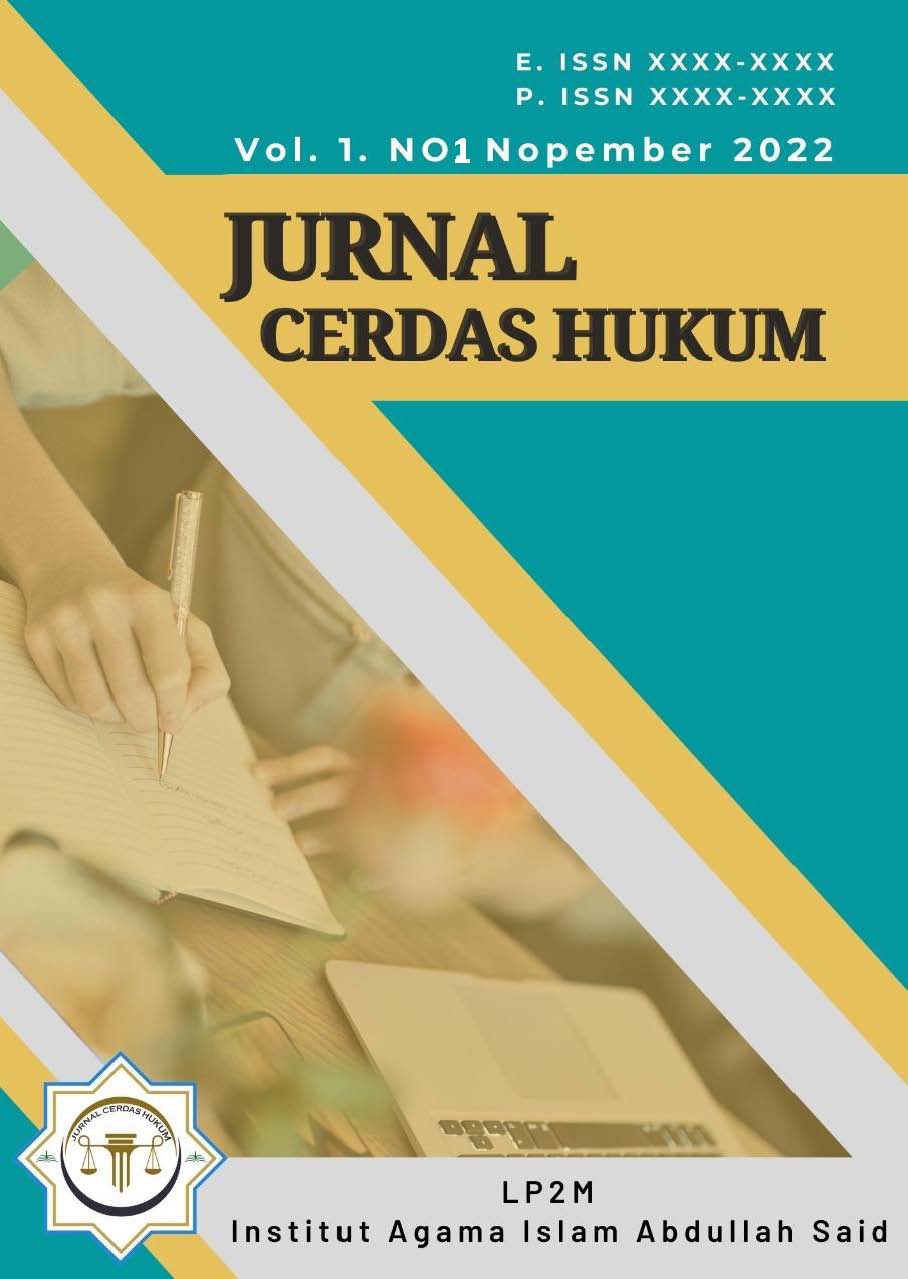METODE IJTIHAD IMAM ABU HANIFAH DAN IMAM MALIK
Keywords:
Ijtihad, Imam Abu Hanifah and Imam MalikAbstract
Along with the times and technology. As well as the increasingly rapid socio-cultural changes that are increasingly complex on all fronts. So it has major implications for Islamic law in this world. This is marked by the many problems that arise in the midst of the Islamic community. Some of the problems that arise still require ijtihad formulas to determine their legal status. Meanwhile, the Messenger of Allah is no longer there, and the revelation has also been sent down. To find the formulation of Islamic law on issues that have not been determined by law in the Qur'an and hadith. And it is not found in the ijtihad fatwas of contemporary scholars. Then came the ijtihad. As one of the methods used by mujtahid scholars in formulating these contemporary Islamic legal issues. And this method of ijtihad had been carried out during the time of the Prophet and during the time of the Prophet's companions. And the more complex the problem is, the more competent scholars are born who have the competence to perform ijtihad. Among them are Imam Hanafi and Imam Malik. And after being examined, each of these scholars has quite a different model of ijtihad. Imam Abu Hanifah based his thoughts and models of ijtihad on the Koran, sunnah, ijma', qiyas, and istihsan. While Imam Maliki in developing ijtihad, is guided by several sources, namely the Koran, sunnah, ijma', qiyas, qaul shahabi, madinah expert charity, mashalih mursalah, istishab, syaddudz dzari'ah, and syar'u man qablana.
References
Abdul, Jafar Wahyu. (2014) . Ijtihad Dalam Bentang Sejarah Prakodifikasi, (Jurnal: NIZAM) Vol. 4. No. 1.
Ahmad, Asy-Syurbasyi. (200)1 al-Aimmah al-Arba’ah (Sejarah dan Biografi Empat Imam Madzhab, Jakarta: Penerbit Amzah., Cetakan. III
Ahmad Farid, Syaikh, 60 Biografi Ulama Salaf, ( Jakarta: Pustaka al-Kautsar, 2006), Cet. I
Arifuddin, Amir, Usul Piqih, (Ciputat: PT Logos Wacana Ilmu).
Aziz, Abdul Dahlan, Ensikopedia Hukum Islam, Jakarta. PT Ihtiar Baru Hooeve 1997)
Tahido, Yanggo. (1999). Huzaimah, Pengantar Perbandingan Mazhab. Jakarta: Logos Wacana Ilmu.
Asy-Syurbasi ,Ahmad. (1993) Sejarah dan Biografi 4 Imam Madzhab, Jakarta: PT. Bumi Aksara., cet, II
Badi ,Ahmad, Ijtihad: Teori Dan Penerapannya. Vol. 24. No. 2. 2012.
Fatimah, Ijtihad Istinbath dan ijtihad tatbiqi menurut al syatibi dalam kitab al-muwafaqat. Jurnal: Hukum Diktum). Vol. 9. No. 2. 2011.
Kasdi, Abdurrohman, Menyelami Piqih Madzhab Maliki (Karakteristik Pemikiran Imam Malik Dalam Memadukan Hadits dan Piqih). (Jurnak: Jurnal YUDISIA). Vol. 8. No. 2. 2017
Khoolis, Nur. (2013) ). Kuliah Ulumul Hadits: Pengantar Studi Hadits. Yohyakarta: Semesta Ilmu, Cetakan. 1
Maimun, Reoriantasi Ijtihad Kontemporer: Analisis Hukum Islam, (Jurnal: Al-‘adalah). Vol. XI. No. 2. 2013.
Rohidin. (2016). Pengantar Hukum Islam Dari Semenanjung Arabia Sampai Indonesia.Yogyakarta: Lintang Rasi Aksara Books
Sakti, Habibullah Eka, Pandangan Imam Abu Hanifah Dan Imam Syafi'i Tentang Al-Istihsan. Jurnal Hukum Dan Pranata Sosial Islam.
Yunus , Mahmud. (1973). Kamus Arab Indonesia. Jakarta: Yayasan Penyelenggara Penerjemah/ Penafsir al-Quran
Downloads
Published
How to Cite
Issue
Section
License
Copyright (c) 2022 Irwansyahlubis Irwansyahlubis, Halimatus Adiah, muhammad sibawaih

This work is licensed under a Creative Commons Attribution 4.0 International License.














